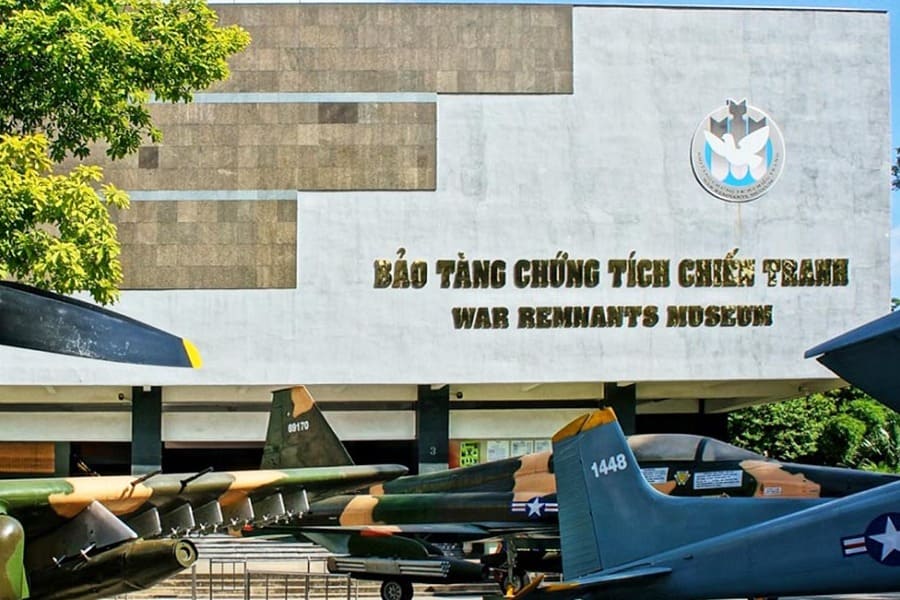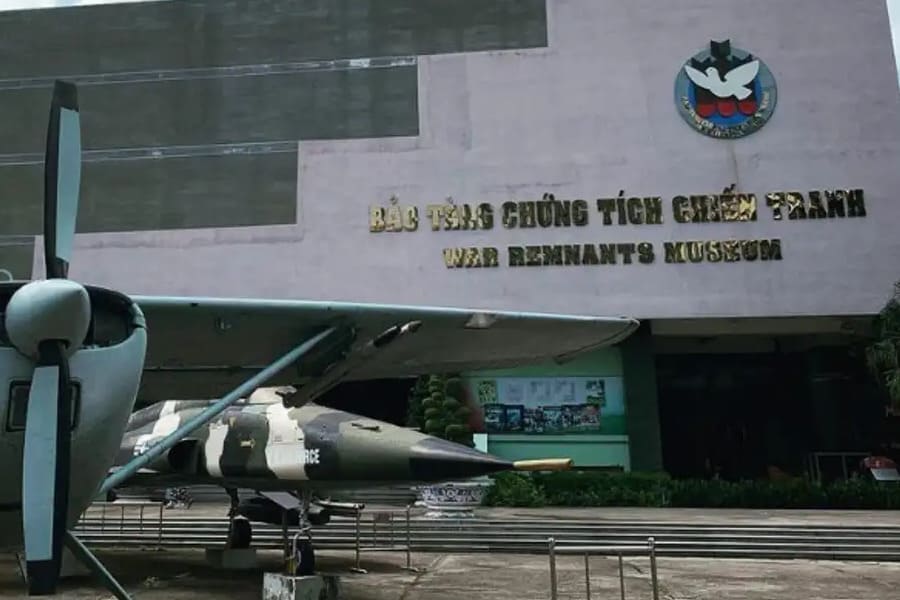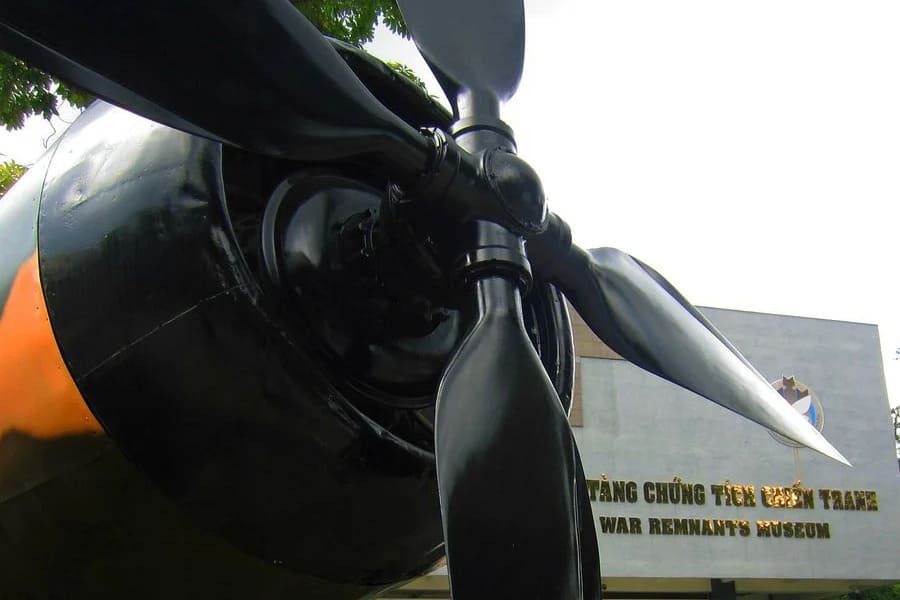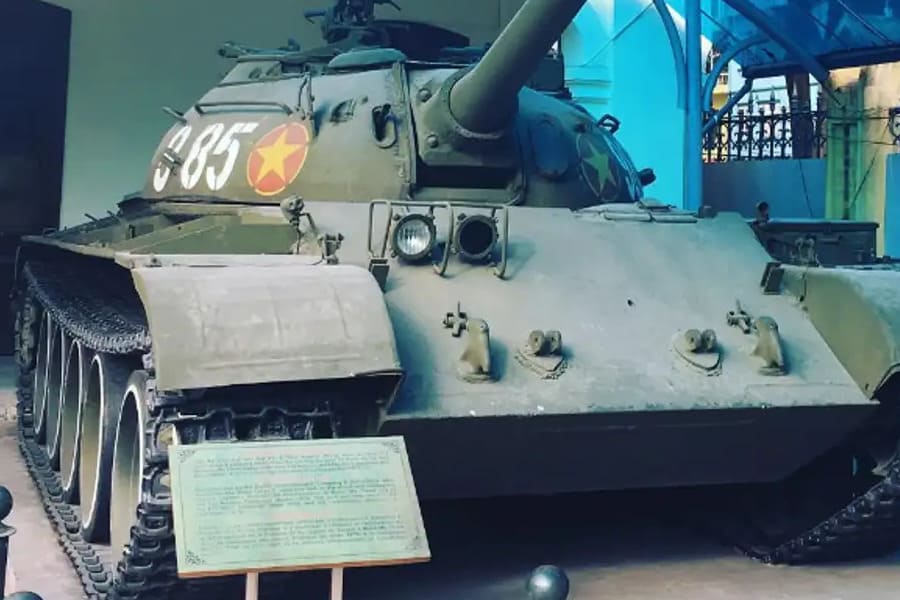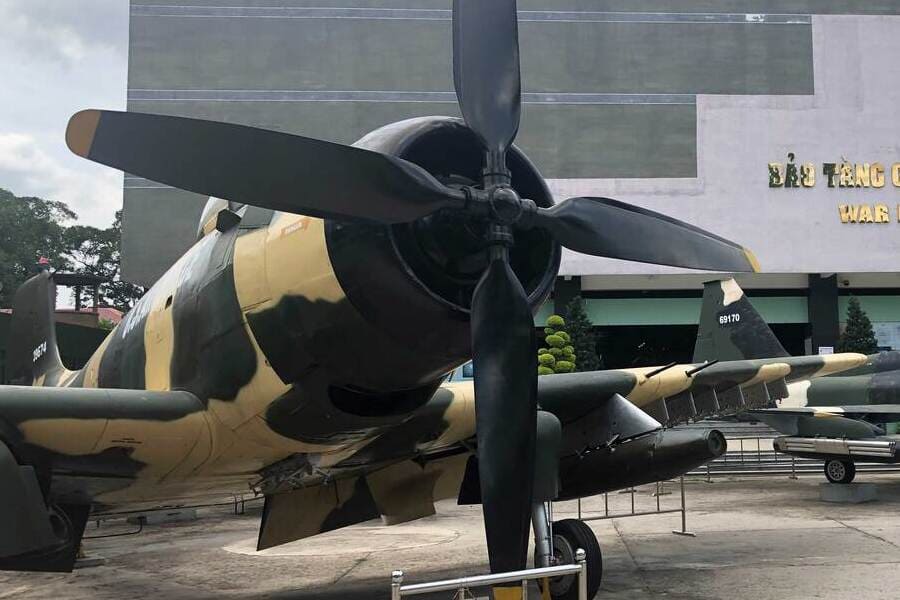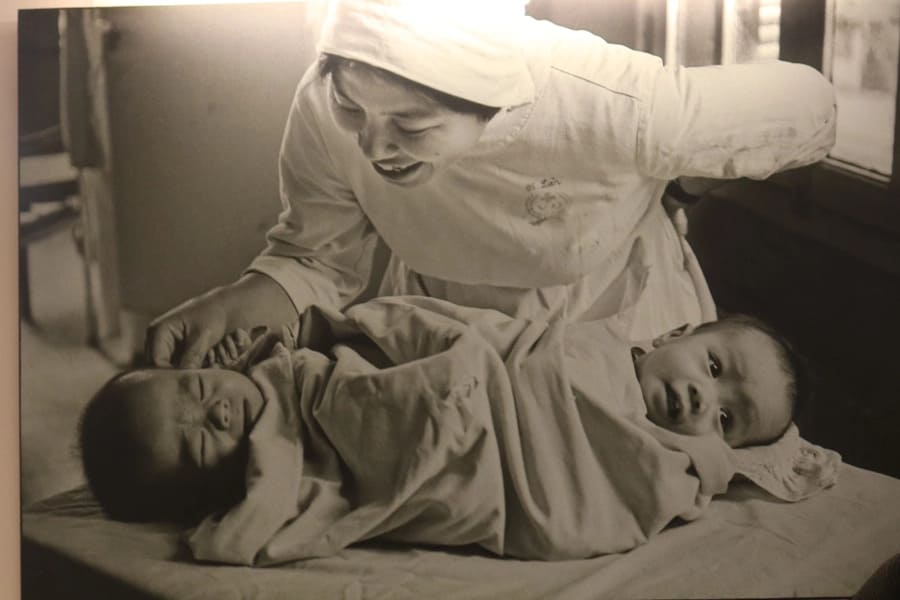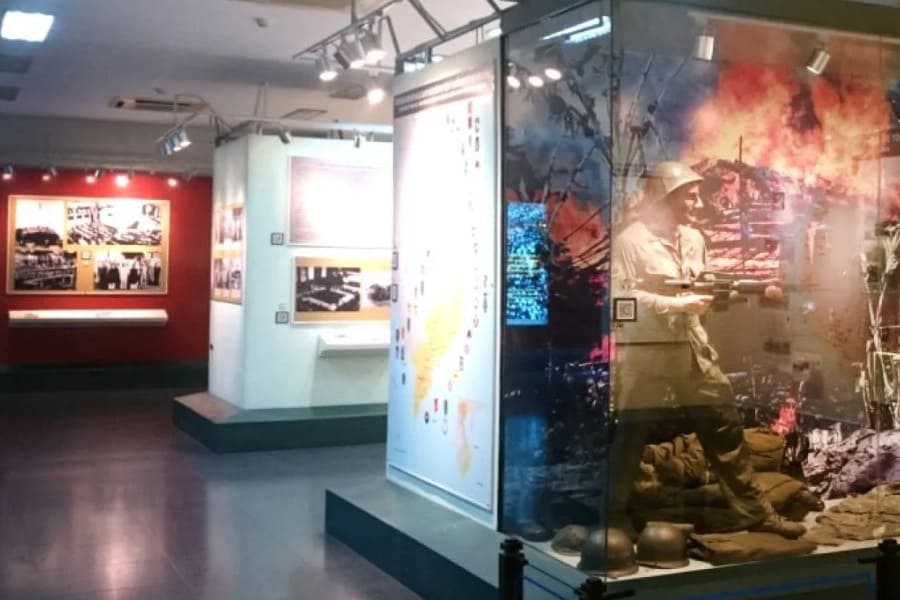The War Remnants Museum in Ho Chi Minh City is well-known as one of Vietnam’s most popular history museums. It attracts visitors from around the globe, especially those from Western countries, who are eager to learn about the Vietnam War—a crucial event in world history. The museum showcases how Vietnam achieved a significant victory over the United States and highlights the ongoing effects of the war. It provides a poignant and insightful experience, offering a deep understanding of Vietnam’s past and its enduring impact on the nation and its people.
The historical significance of the War Remnants Museum
The War Remnants Museum is really important because it shows us a lot about Vietnam’s history, especially during the Vietnam War. It covers not just the war itself but also earlier times when Vietnam was ruled by France and other conflicts they faced. This helps us understand why Vietnam fought so hard for its independence. Inside the museum, some exhibits show the harsh realities of war with powerful pictures and items. You can see how napalm bombs and Agent Orange affected people and learn about the bravery of the Vietnamese. The museum also shows how people from around the world felt about the war, with exhibits about global support for Vietnam and protests against the war. This helps us see how the war didn’t just affect Vietnam—it was a big deal for the whole world.
Travel guide at the War Remnants Museum
Opening Hours
The War Remnants Museum is open daily from 7:30 AM to 5:30 PM, including Vietnamese holidays.
Entrance Fee
Admission costs VND 40,000 per person. Children under 6 years old can enter for free.
Where is the War Remnants Museum?
The War Remnants Museum is at 28 Vo Van Tan, District 3, Ho Chi Minh City (Saigon). It’s near the city center and within walking distance from other popular tourist attractions such as the Independence Palace, Notre Dame Cathedral, and Saigon Central Post Office.
How to get there?
– Taxi: The easiest way is to take a taxi, which is readily available in all tourist areas of Ho Chi Minh City. A taxi ride from District 1, where many hotels are located, typically costs under VND 50,000 (about $2).
– Bus: If you prefer public transportation, you can take a bus. Bus number 14: Departing from Mien Dong bus station; Bus number 28: Departing from Ben Thanh market; Bus number 06: Departing from Cho Lon bus station (Chinatown); Buses are inexpensive and a great way to experience local travel.
– Ride-Hailing Apps: Using ride-hailing apps like Grab or Be allows you to book a car or motorbike ride conveniently from your location to the museum. These apps are widely used in Ho Chi Minh City and offer competitive pricing.
Evolution of the Museum
The War Remnants Museum opened in 1975, right after the Vietnam War ended. It was created to show the true and harsh realities of the war. Over the years, the museum has been updated and renovated several times to improve its exhibits and reflect the changing relationship between Vietnam and the United States.
The museum has become one of the most visited attractions in Ho Chi Minh shore excursions. Since it opened, more than 23 million people have visited, including over 11 million from other countries. Each year, the museum sees over 1 million visitors who come to learn about Vietnam’s history and the impact of the war.
Must-Experience Exhibits at the War Remnants Museum
Outdoor Exhibits of the War Remnants Museum
Military Equipment
When you visit the War Remnants Museum, the first thing you’ll see outside are the big military machines used during the Vietnam War. There are helicopters, airplanes, tanks, and bombs that were all used by the US Army. These are displayed in the courtyard, giving you a real sense of the war’s scale.
Tiger Cages
At the back of the courtyard, you’ll find the Tiger Cages. These are replicas of the small, barbed-wire cages that were used to hold and torture political prisoners during the war. The display includes statues showing how prisoners were kept and tortured, along with photos and tools used for these harsh treatments. This part of the exhibit helps visitors understand the severe conditions prisoners faced during the war.
Ground Floor of the War Remnants Museum
International Support
On the ground floor, exhibits show how people worldwide supported Vietnam during the war. Many photos, posters, and items illustrate global protests against the war and support for Vietnamese independence. This section helps visitors understand that the conflict was not just a Vietnamese issue but a global concern, with many countries and people advocating for peace.
Agent Orange Victims
There is also a special area dedicated to the victims of Agent Orange, a toxic chemical used during the war. The exhibits include photos and stories of people affected by this chemical, showing the severe health problems and environmental damage it caused. Some victims of Agent Orange make and sell crafts here, such as keychains and sculptures. This section highlights the long-term impact of the war on the Vietnamese people and their ongoing struggles.
First Floor of the War Remnants Museum
Agent Orange Aftermath
On the first floor, there is a powerful exhibit about the effects of Agent Orange, a harmful chemical used during the war. The display includes photos and stories of people who suffered severe health problems because of this chemical. It shows how Agent Orange damaged the land, caused birth defects, and led to many long-term health issues for the Vietnamese people.
War Crimes
This floor also has exhibits about the war crimes committed during the Vietnam War. There are photos, documents, and items that show the terrible acts of violence and cruelty that happened. This includes pictures of destroyed villages, injured civilians, and other evidence of the suffering caused by the war. These exhibits help visitors understand the human cost of the conflict and the severe impact on the Vietnamese population.
Second Floor of the War Remnants Museum
Vietnam War and Peace
On the second floor, you will find exhibits that provide a broad overview of the Vietnam War. These displays include photos, artifacts, and documents that show different aspects of the war, including battles, strategies, and the daily life of soldiers. Some exhibits highlight the efforts and hopes for peace during and after the war, showing the resilience and desire for harmony among the Vietnamese people.
Historical Truth
Another section on this floor is dedicated to presenting the factual history of the war. This exhibit aims to provide an honest and detailed account of what happened, including the reasons behind the war, the key events, and the outcomes. It includes photos, written accounts, and other materials that help visitors understand the true story of the Vietnam War and its profound impact on the country and its people.
Are you ready to visit the War Remnants Museum?
This museum offers a profound and educational experience that brings you face-to-face with Vietnam’s turbulent history, ideal for Vietnam shore excursions. By exploring the exhibits, you gain a deeper understanding of the Vietnam War, its far-reaching impacts, and the resilience of the Vietnamese people. Whether you’re a history enthusiast or simply curious, the War Remnants Museum provides valuable insights and reflections. Make sure to add this significant landmark to your itinerary for a memorable and enlightening visit.

